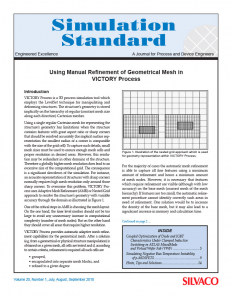Using Manual Refinement of Geometrical Mesh in VICTORY Process
Introduction
VICTORY Process is a 3D process simulation tool which employs the LevelSet technique for manipulating and deforming structures. The structure’s geometry is stored implicitly on the hierarchy of regular (constant mesh size along each direction) Cartesian meshes.
Using a single regular Cartesian mesh for representing the structure’s geometry has limitations when the structure contains features with great aspect ratio or sharp corners that should be resolved accurately (for implicit surface representation the smallest radius of a corner is comparable with the size of the grid cell). To capture such details, small mesh sizes must be used to ensure enough mesh cells and proper resolution in desired areas. However, this resolution may be redundant in other domains of the structure. Therefore a globally higher mesh resolution does lead to an excessive size of the computational grid. The consequence is a significant slowdown of the simulation. For instance, an accurate representation of structures with sharp corners normally requires high mesh resolution only around those sharp corners. To overcome this problem, VICTORY Process uses Adaptive Mesh Refinement (AMR) or Nested Grid approach to resolve the structure’s geometry with variable accuracy through the domain as illustrated in Figure 1.



